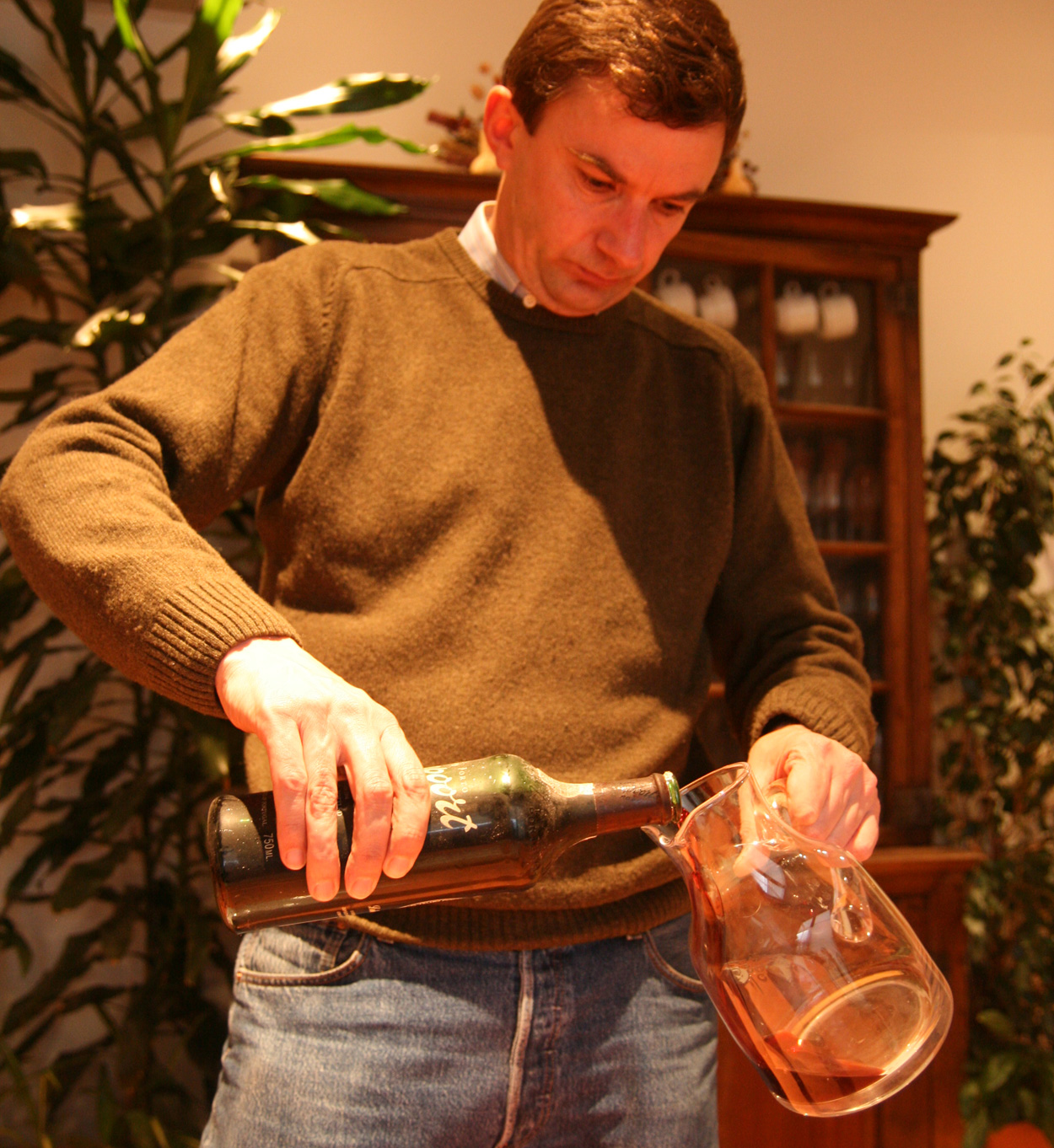Lunch at Niepoort
/The newly constructed modernist cellar at Quinta de Napoles is one of the most visible signs of the revolution underway in the upper Douro. It’s an apt architectural metaphor: The winery at once blends in with its surroundings—its schist facades and long horizontal lines mimic the terraced vineyards below—and it stands out for such technological innovations as a gravity-fed cellar.
It’s here that Dirk Niepoort, one of the so-called Douro Boys, is making top-notch Douro dry wine. The Niepoort family (of Dutch origin) has been producing Porto since the 19th century. But this property, purchased in 1987, is an old quinta that’s been repurposed for the production of premium red and white table wines. (Niepoort’s splendid Porto continues to be made at another quinta across the river.)
Dirk Niepoort has scouted an important local resource: old vines. In addition to his own vineyards, he works closely with a hundred small farmers who own miniscule vineyards planted with 40- to 100-year old vines. Many are field blends with up to 15 types of grapes. In contrast to the best Porto vineyards, located in warm spots beside the Douro river, the vineyards for Charme, Batuta, Redoma and other Niepoort blends are north facing or high altitude (up to 800 meters), offering the coolness necessary to give the wine a refreshing acidity.
That’s what we found when tasting from the barrel—a special treat offered by the lovely Gabriela Santos as she walked us through the new facility. And we found it again at lunch—an extra special treat, as we were invited to join Dirk Niepoort and his two winemakers as they sat down to dine with one of their growers.
Lunch was superb: A soul-warming bean and vegetable soup was accompanied by fried bacahlao fritelle; next came a casserole of baked cod with potatoes and veggies. For the side of salad, we passed around some newly pressed olive oil, as fruity and piccante as Sicily’s best. All that was accompanied by a parade of wonderful wines: their lovely whites Branco and Redoma; the barrel-fermented Luz; Doda, a blend of Douro and Dao reds (made in collaboration with Dao winemaker Alvaro de Castro); and an unlabeled Voyeur, commissioned by an artist friend.
Dessert was a thick, moist orange cake. (Peeling a fresh, fragrant orange to share, Dirk jested that he wouldn’t mind selling the vineyards and planting orange trees instead.) With this, the heavy guns came out: A late bottled vintage 1990 — to die for — and two succulent blends from 2008 whose fate is yet to be determined. (TBD: Crusted or not.)
Despite the rain that continues to drench Portugal, this was a sunny spot on our scouting trip. We’ll be back in September with our Douro Valley tour — for a winery tour, tasting, and another wonderful homemade lunch. I’m already counting the days.






